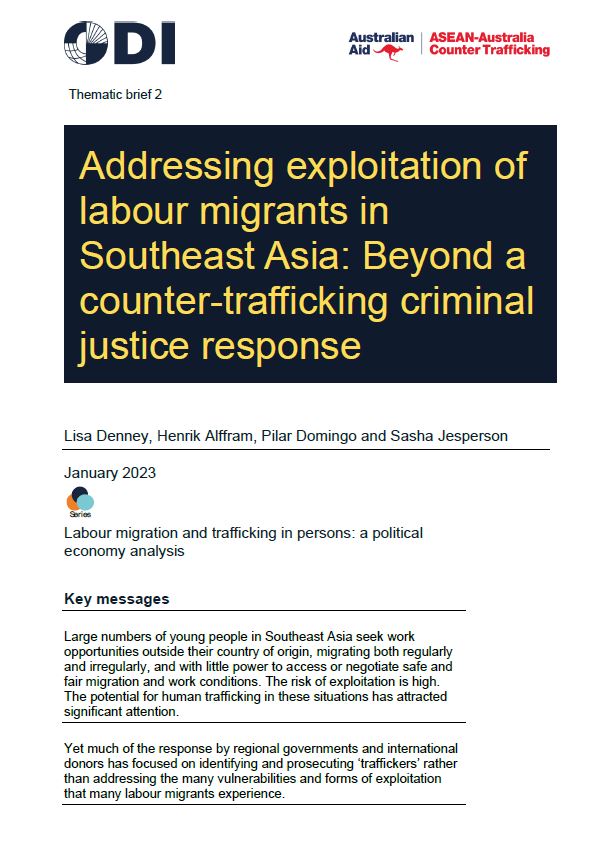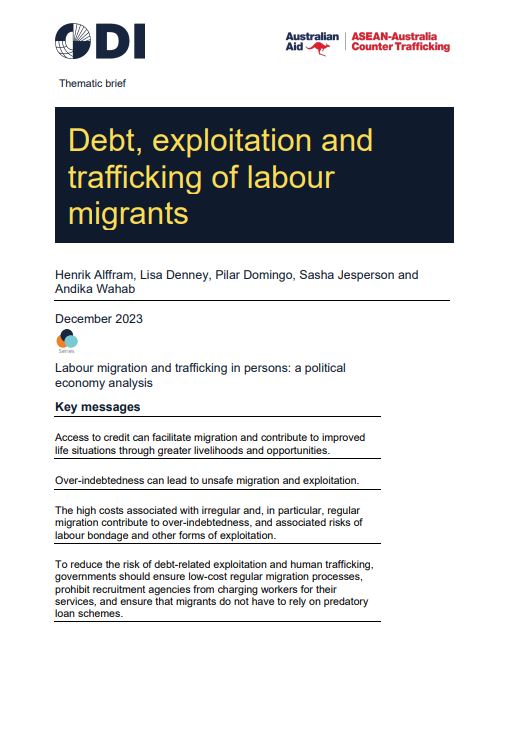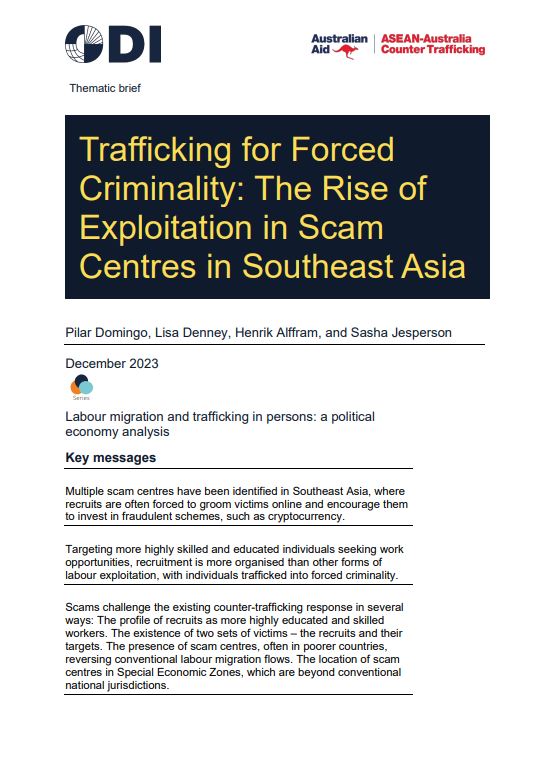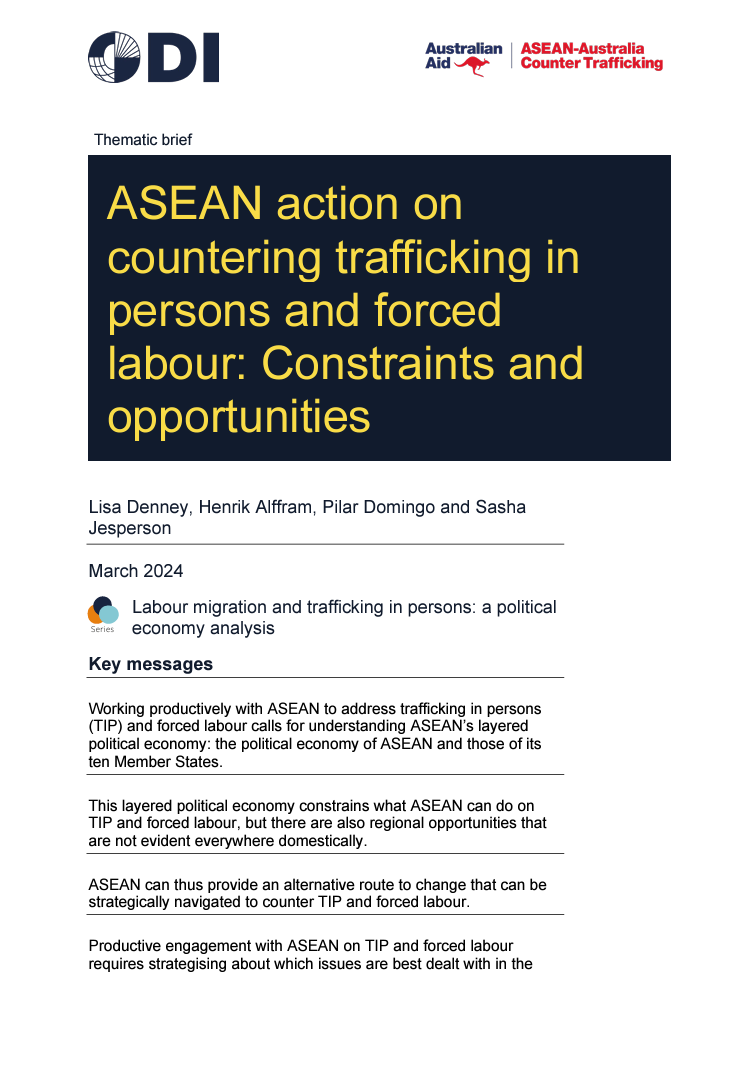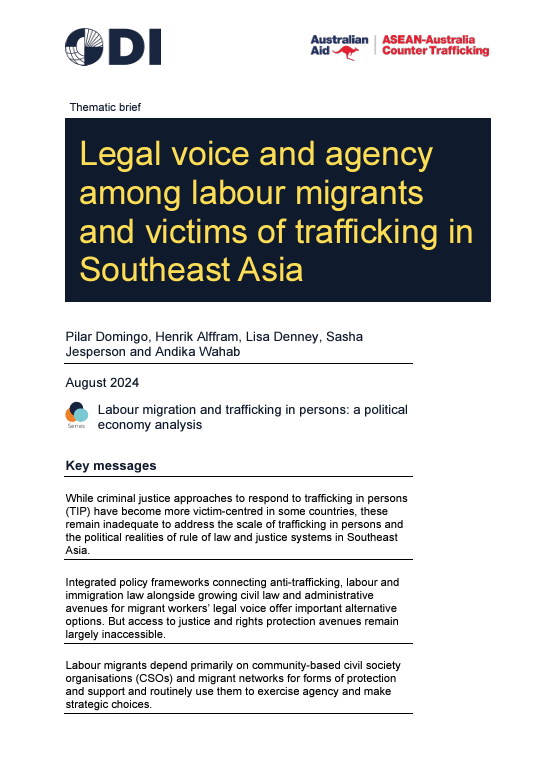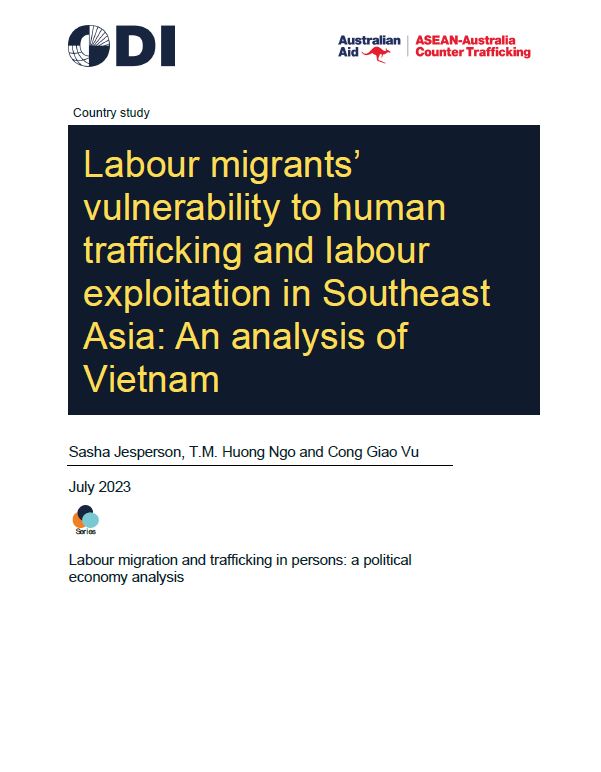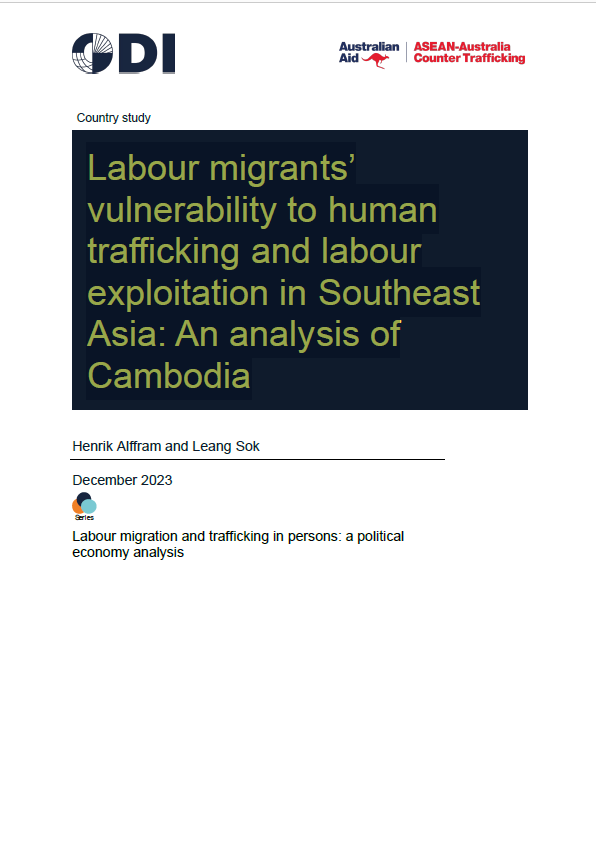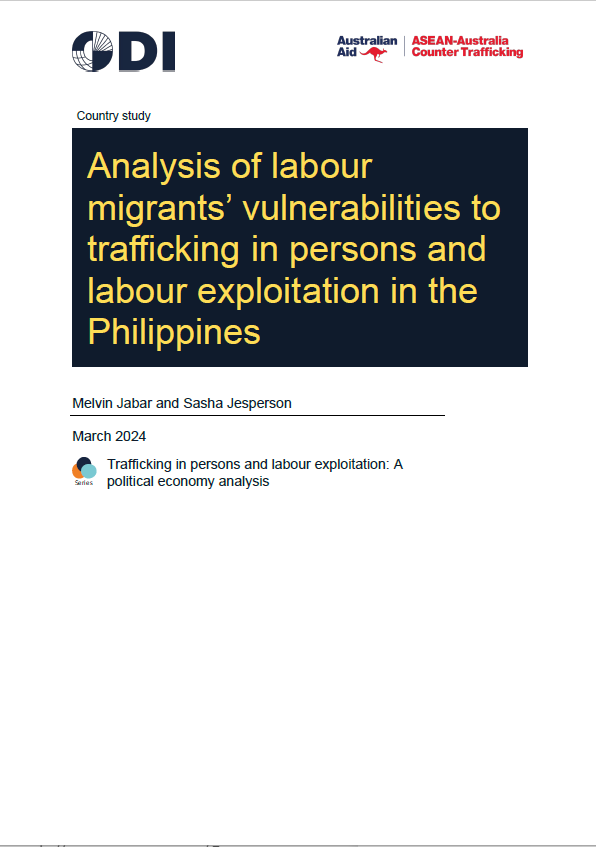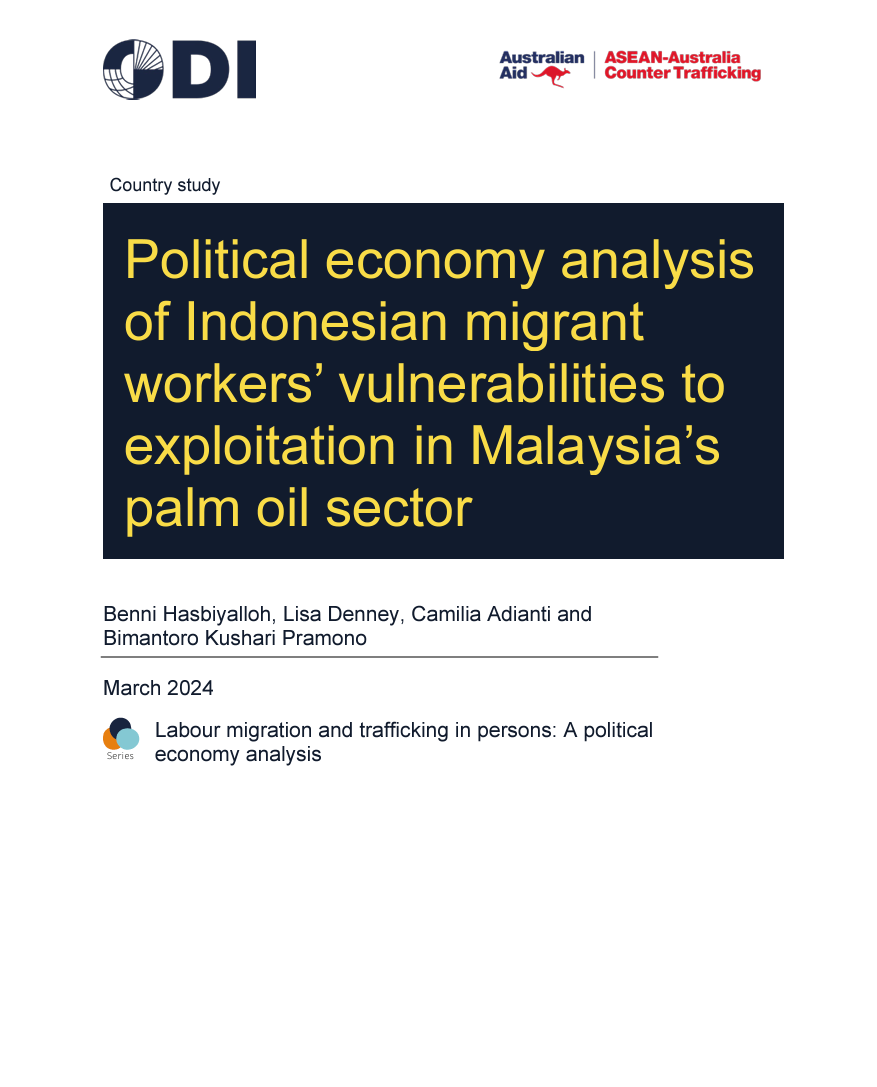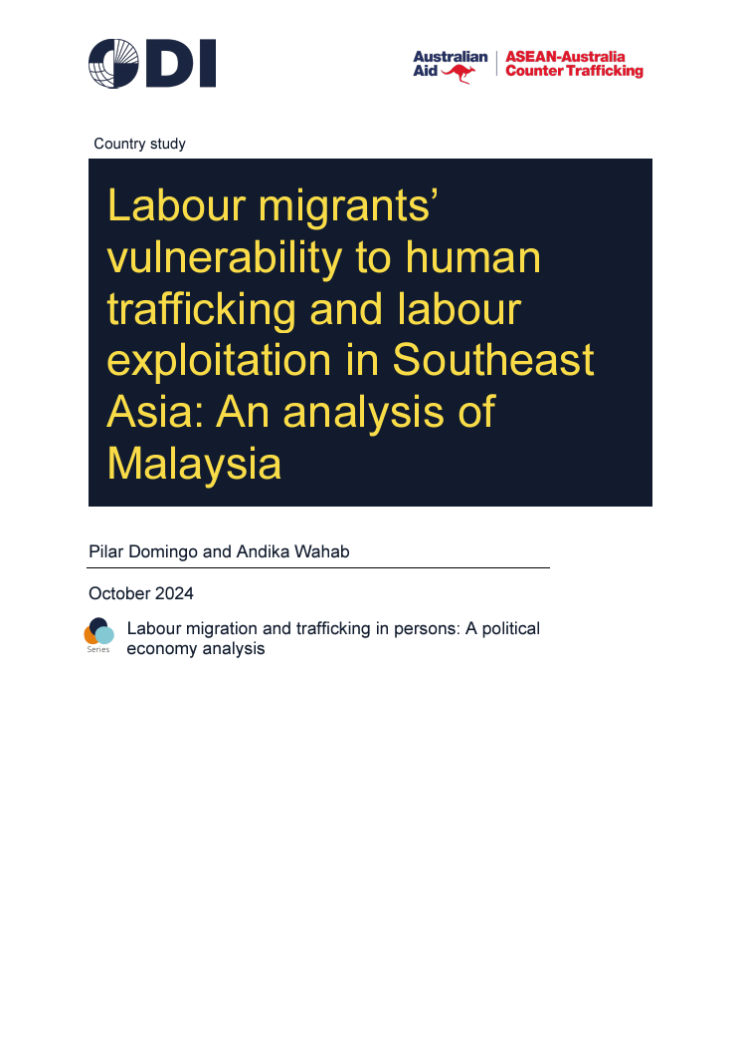Migrant workers are among the most vulnerable populations to human trafficking in the region and elsewhere, however few are ever officially identified as victims of trafficking. The different levels of economic and industrial development across the region, inequalities in human development and security, labour supply and demand, demographic profiles and changes, governance and access to justice – all affect labour migration patterns. Risk of trafficking in these migration patterns result from a range of factors, from debts to discrimination, recruitment and employment practices, and affect specific populations at-risk.
ASEAN-ACT has partnered with the ODI to undertake a political economy analysis of the factors that affect migrant workers vulnerability to human trafficking in labour migration in Southeast Asia, in order to inform more effective responses.
Thematic Briefs
Thematic Brief 1: Labour migration in Cambodia, Laos, Thailand and Vietnam: migrants’ vulnerabilities and capacities across the labour migration cycle
Labour migrants experience a wide range of vulnerabilities that put them at risk of human trafficking and other forms of exploitation. Despite these vulnerabilities, they also have agency and capacity that can assist in some degree of safeguarding from exploitation.
Mapping these vulnerabilities and understanding each stage of the labour migration cycle can usefully pinpoint where governments, civil society, international organisations and the private sector might focus their efforts.
This is the first in a series of country and thematic briefs explores these issues in Cambodia, Laos, Thailand and Vietnam, developed in partnership with the Overseas Development Institute (ODI), under ASEAN-ACT’s pathway to progress policy dialogue and reform. Further country and thematic briefs covering all ASEAN Member States will be released throughout 2023-24.
Thematic Brief 2: Addressing exploitation of labour migrants in Southeast Asia: Beyond a counter-trafficking criminal justice response
Large numbers of young people in Southeast Asia seek work opportunities outside their country of origin, migrating both regularly and irregularly, and with little power to access or negotiate safe and fair migration and work conditions. The risk of exploitation is high.
Yet much of the response by regional governments and international donors has focused on identifying and prosecuting ‘traffickers’ rather than addressing the many vulnerabilities and forms of exploitation that many labour migrants experience.
This thematic brief sets out the diverse forms of exploitation that labour migrants in Southeast Asia experience, and how efforts to respond might need to adapt. This includes broadening beyond the dominant frame of criminal justice in order to address exploitation at scale, and in a manner that is realistic about the prevailing political economy.
Read more about this study in this DevPolicy blog
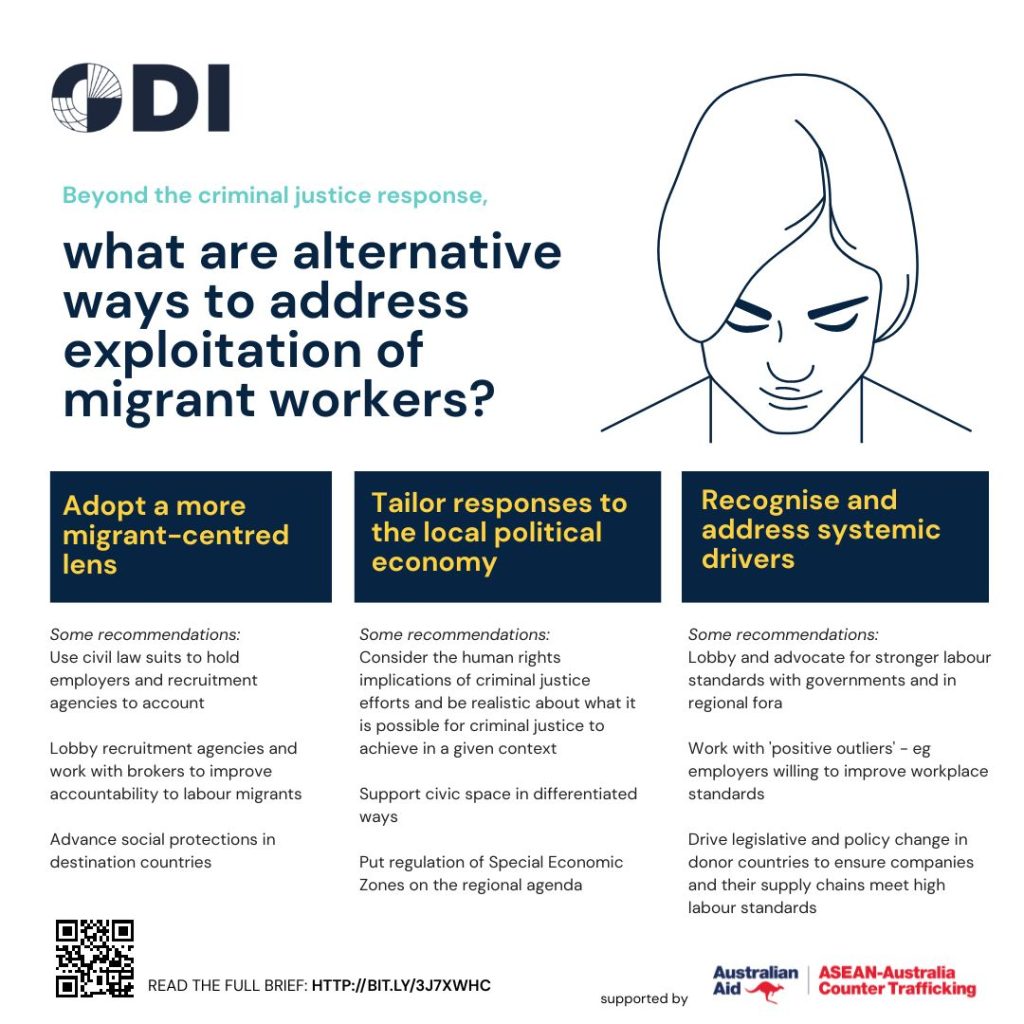
Thematic Brief 3: Rethinking labour recruitment to reduce exploitation and trafficking of migrants
Increasing awareness of the risks of human trafficking and exploitation in Southeast Asia has prompted a focus on the recruitment process and the risks faced by workers who seek employment overseas.
The majority of migrant workers in Southeast Asia rely on irregular migration channels due to the cost and complexity of regular channels. In some cases, regular migration channels are not always a safer option for migrants.
This thematic briefing paper explores the dynamics of migrant worker recruitment, and makes recommendations for how regular migration channels could be improved to reduce vulnerability to human trafficking and exploitation.

Thematic Brief 4: Debt, exploitation and trafficking of labour migrants
Indebtedness is a key driver of labour migration – many households opt for a family member to work overseas and send remittances in order to pay off accrued debts at home. Often labour migrants also accrue debt – both at home and at their destination – while working overseas. This can lock them into cycles of continued work to get out of debt but also compounding debts that demand more work, and so on.
This study focuses on these types of risks throughout the migration cycle, from debt as a driver of unsafe migration to the consequences of debt during migration and on workers’ return to their country of origin.
Thematic Brief 5: Trafficking for forced criminality: the rise of exploitation in scam centres in Southeast Asia
A new form of human trafficking has rapidly taken root in the ASEAN region. Individuals are recruited into what are presented as legitimate jobs in digital marketing, customer services and other areas such as construction and translation, and then largely forced to work in scam centres. These centres use deceptive means to recruit workers, largely from abroad, to form online relationships with people in other countries, who are then scammed, for example by encouraging them to invest in fraudulent cryptocurrency transactions.
This study sets out what has driven the emergence of scam centres in the region, considers the unique challenges that scam centres pose to counter-trafficking efforts, and presents ideas for how the counter-trafficking community might adapt to address this growing form of trafficking.
Thematic Brief 6: Addressing labour exploitation and human trafficking as ‘sticky’ problems: The role of Southeast Asia’s political economy
Persistent exploitation and trafficking of labour migrants are due not only (or even primarily) to a lack of knowledge, skills or capacity on the part of criminal justice and related rights protection agencies. Rather, these problems are also intrinsically related to the political economy features of Southeast Asia ─ all countries of origin, transit and destination. These political economy features interact in ways that sustain a lack of political prioritisation of the rights and agency of labour migrants and constrain concerted attempts to address exploitation and trafficking.
This brief reflects on key features of the political economy of four Southeast Asian countries (Cambodia, Lao PDR (hereafter Laos), Thailand and Vietnam) and how these shape the experience of labour migrants and trafficking in the region. In particular, national development trajectories, the political systems of these countries, the nature of state–society relations and associated conceptions of citizenship, rights and justice are particularly pertinent. These features interact in ways that make the problems of vulnerability to
exploitation and trafficking of labour migrants ‘sticky’ and persistent.
Thematic Brief 7: ASEAN action on countering trafficking in persons and forced labour: constraints and opportunities
ASEAN’s efforts in addressing trafficking in persons (TIP) through ASEAN Convention Against Trafficking in Persons, Especially Women and Children (ACTIP) is praised, but it faces challenges like slow progress and lack of funds. This thematic brief delves into the political economy constraints within ASEAN that influence its actions regarding TIP and labor migration, aiming to provide insights for future programming.
Thematic Brief 8: The limits and opportunities for legal voice and agency among labour migrants and victims of trafficking in Southeast Asia
Labour migration is vital to ASEAN’s economic growth, aiding both origin and destination countries. However, it often results in exploitation, trafficking, and abuse due to systemic power imbalances. Stakeholders benefiting from the status quo neglect the rights of migrants and trafficking victims.
This paper examines how migrants and victims use their voice and agency to counter these risks, drawing on case studies of access to justice and the impact of legal and policy developments on their protection.
Country Briefs
Country Brief 1: Vietnam
Vietnamese migrant workers are extremely vulnerable to exploitation and abuse. They assume the risk of migrating for work, and tend to deal with the exploitation themselves rather than reporting it to the authorities. This arises from vulnerabilities they experience directly, such as high fees charged by recruitment agencies, indebtedness, lack of information and irregular status (in some cases). Vulnerability is also a result of the lack of support services, difficulties in investigating cases and the lack of incentive to report them.
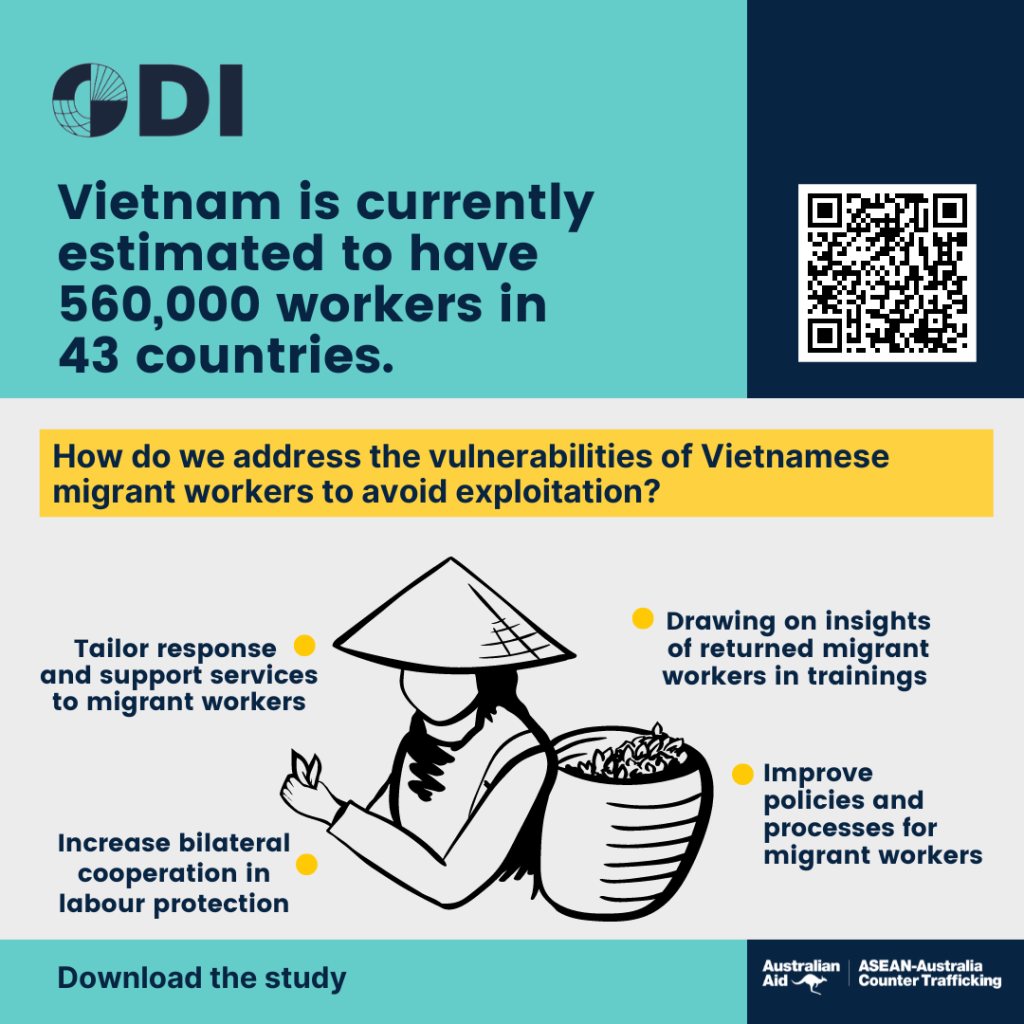
Country Brief 2: Thailand
Labour migration has played a significant role in the development of Southeast Asia, particularly in Thailand. Thailand’s development model heavily relies on labour migration due to an ageing population, rapid economic growth, and the demand for low-skilled workers in key sectors. Consequently, the influx of labour migrants into the country, especially from Cambodia, Lao People’s Democratic Republic, and Myanmar, has significantly increased over the past two decades. While this migration brings many positive outcomes, labour migrants are exposed to risks of trafficking in persons and labour exploitation.
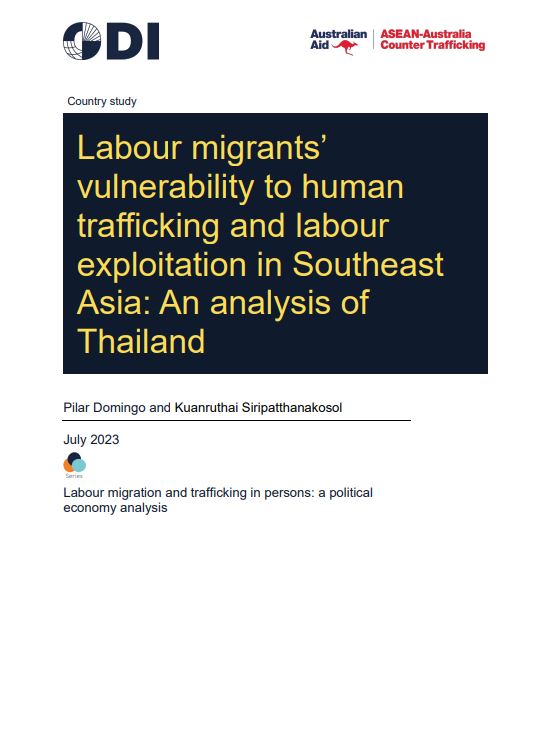
Download brief (Thai)/ ฉบับแปลภาษาไทย
Country Brief 3: Lao PDR
This paper examines key political economy factors that sustain vulnerability to exploitation and TIP for Lao labour migrants. It explores three migration corridors: Laos to Thailand; Laos to China; and Laos to the Golden Triangle Special Economic Zone. Addressing labour migrant vulnerabilities and strengthening their protective capacities through prevention, protection and response can assist in reducing different risks of exploitation on these migration routes.
Country Brief 4: Cambodia
This paper reviews the structural and political economy factors that affect Cambodian labour migrants’ vulnerability to human trafficking. It also suggests some reforms such as streamlining migration processes, enforcing regulations on recruitment agencies, and enhancing victim support resources.
Country Brief 5: Philippines
This country study on the Philippines is part of a series of ASEAN country studies seeking to understand what shapes labour migrants’ vulnerabilities to exploitation, including TIP. The Philippines is primarily a migrant-sending country, with approximately 10% of the population abroad. While not all of these are migrant workers, remittance flows are an important component of the Philippine economy.
Country Brief 6: Indonesia
This country study documents the vulnerabilities of Indonesian labour migrants travelling to work in Malaysia’s palm oil sector. It sets out the context in which this migration takes place, the pathways and associated vulnerabilities, and the response and protective capacities of various actors involved.
Country Brief 7: Malaysia
This country study examines the experience of labour migrants and victims of trafficking in Malaysia, looking at the multiple causes that contribute to sustaining practices of exploitation, and the opportunities for improving the protection of these workers.
For further information, please contact info@aseanact.org

